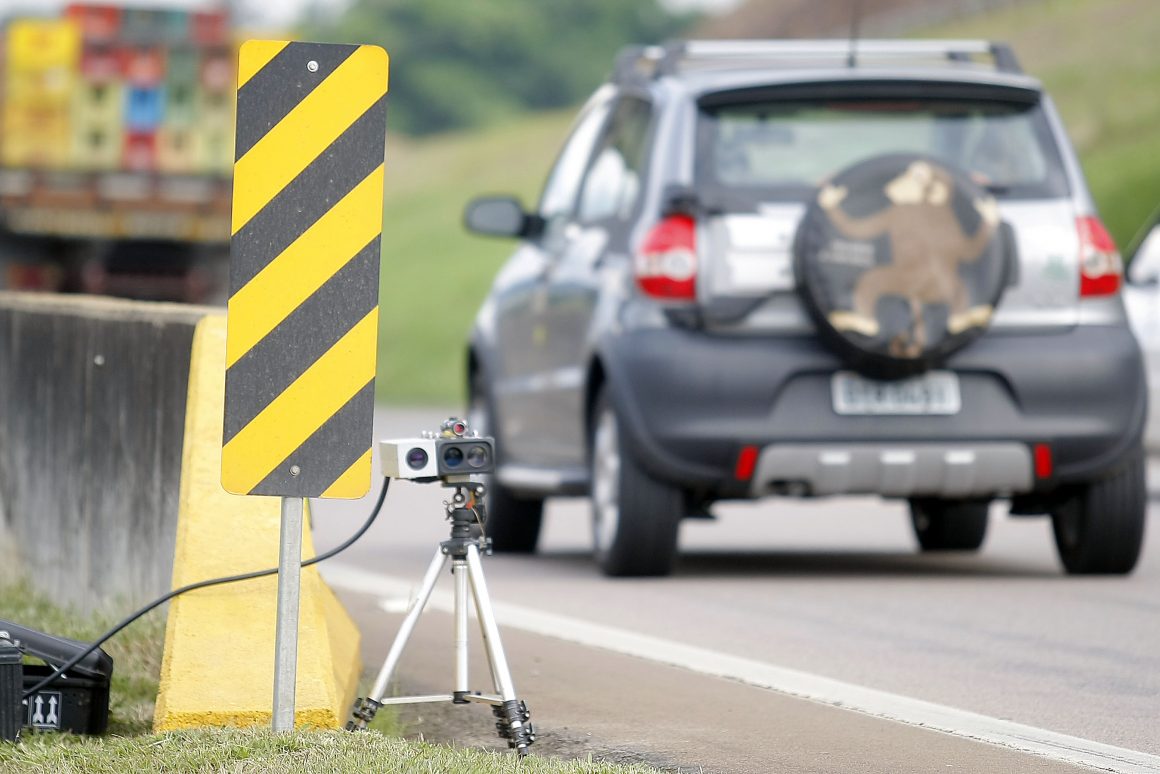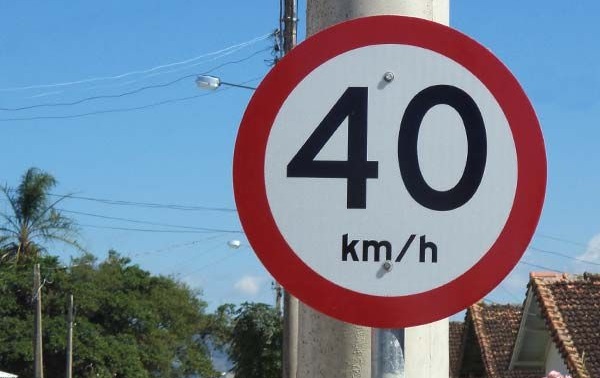RIO DE JANEIRO, BRAZIL – The CONTRAN (National Traffic Council) has banned hidden radars in Brazil. Under Resolution 798, published in the Federal Gazette on Wednesday, September 9th, all monitored routes must have signs stating the maximum speed allowed, with meters visible at all times. The monitored routes and the radars’ location must also be disclosed on the internet. The rule comes into force from November 1st this year.
The changes introduced by the CONTRAN meet a request from President Jair Bolsonaro. Last year, he requested the new rules from the Ministry of Infrastructure and advocated that radars on roads be only “educational”, not punitive. He had also ordered the suspension of mobile radars on federal highways, but the Courts suspended his decision.
Now, under the new rules, the use of equipment without an image recorder is also prohibited. And there will be restrictions on the installation of ostensive speed control radars, such as the “Electronic Speed Bump”. This equipment should only be used in places considered critical – like stretches of road where users such as pedestrians, cyclists, and non-motorized vehicles are more vulnerable.

Another decision concerns the locations where there is a gradual reduction in speed. At these points, signaling will be mandatory. The measure aims to remove radars installed in places where there is fluctuation in the speed limit. Below, Mauricio Januzzi, president of the OAB-SP (São Paulo Bar Association) Road Law Committee, clarifies the matter.
What types of radar are there?
There are two types of radars: fixed and portable. The fixed one is the speed meter with an image recorder installed in a defined location and on a lasting basis and can be specified as:
a) controller: a meter intended to monitor the maximum speed limit of the road or its specific point, signaled by means of a sign; or
b) reducer: meter, known as “electronic speed bump”, mandatorily equipped with a display that exhibits the speed of the vehicle, in parts that are critical and vulnerable to road users.
The portable one is a speed meter with an image recorder, which can be installed in a parked traffic agent’s car, on a tripod, fixed or manual support, with a speed limit equal to or above 60 km/h on urban roads and on highways with a minimum limit of 80 km/h.
All speed meters will need to be equipped with a camera to record the infraction and must register the latitude and longitude of the place of operation.
What types of radars are banned?
Mobile radars are banned, those that remain inside the vehicle of the traffic officer, while in motion.
For stationary and portable radars, the radar must remain visible to drivers. They may not be installed on trees, footbridges, walkways, power poles, or any other site that obstructs its visibility.
Moreover, portable radars, operated manually or mounted on a support, should only be used by the officer outside the vehicle, in the regular exercise of his/her duties, adequately uniformed, in inspection operations.
What should the radar signaling be like?
The places where there is excess speed control by means of a stationary type meter should always be preceded by signs that mark the speed allowed on the stretch.

Are the rules valid for streets inside the city and roads?
The rules apply to streets within cities and roads throughout the country.
What will the restrictions be regarding electronic speed bumps?
Electronic speed bumps must be visible and must necessarily specify the speed at the time the vehicle passed through the system. The speed limit of the location must also be displayed.
This type of radar will also be used for random inspection. It will be allowed in sections considered critical: those that are more susceptible to traffic-related deaths and injuries, or present greater vulnerability for road users, such as pedestrians, cyclists, and non-motorized vehicles.
When will the new rules come into force?
The rules come into force on November 1st for new equipment or radars already in operation installed in a different location after that date. The others will need to be adjusted or replaced by November 1st, 2021.
Is it possible to appeal against fines already imposed for concealed radars?
Drivers can not appeal against fines that have already been imposed by concealed radars because they were under the previous legislation (Resolution 396). Remember that the new rules will only start to apply from November 1st, that is, the changes are not yet valid.
How can drivers prove that they have been fined for concealed equipment?
The proof must be documentary – photo, statement, video – which shows information that the radar is placed inappropriately. In the administrative stage, the documents must be the evidence used to try to lift the fine. If the drivers go to court, they may also use witnesses to attest to the inappropriate location of the speed meter.
Source: R7

